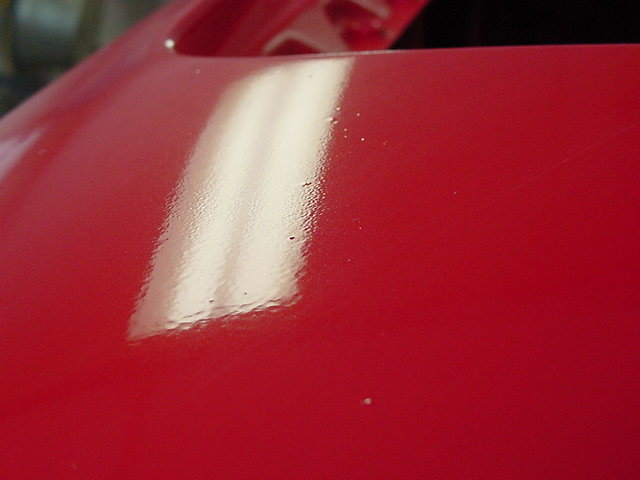When it comes to automotive paint finishes, one of the most prevalent imperfections that craftsmanship enthusiasts often encounter is the infamous “orange peel.” This term conjures images of a textured surface that closely resembles the skin of its fruity namesake—dimpled and uneventful, rather than glossy and smooth. Understanding the nature of orange peel, its causes, and the methods for correction can be invaluable for both professionals and DIYers alike.
Understanding Orange Peel
Orange peel is primarily observed in paint applications, and it’s most commonly associated with automotive coatings. However, it can also manifest in various painting projects, including home interiors, furniture, and industrial finishes. Essentially, it refers to a bumpy texture that disrupts the smoothness of a finish. While initially, it may seem like a mere aesthetic flaw, it hints at underlying issues related to application techniques, materials, or environmental conditions.
What Causes Orange Peel?
Delving into the intricacies of orange peel, multiple factors contribute to this phenomenon, often intertwined in a complex dance of physics and chemistry. Here are the key causes:
1. Improper Spray Techniques:
One of the most frequent culprits of orange peel is improper spray technique during application. If the paint is not evenly distributed, or if the nozzle is too far from the surface, the paint can atomize poorly, leading to uneven texture. Additionally, spraying too quickly can lead to a lack of adequate deposition, while spraying too slowly may cause over-application and sagging.
2. Viscosity of Paint:
The viscosity—or thickness—of the paint can also play a critical role. If the paint is too thick, perhaps due to cold temperatures or an incorrect mix of products, it could lead to inadequate flow and a bumpy finish. Conversely, excessively thinned paint may lead to runs and sags, complicating the painter’s battle against imperfections.
3. Environmental Conditions:
Temperature and humidity are external factors that significantly influence the behavior of paint during application and drying phases. High humidity can cause the paint to dry unevenly, creating a textured appearance reminiscent of orange peel. Conversely, low temperatures can slow down the curing process, leaving a similar effect. Understanding the ideal application conditions can aid craftspersons in avoiding this defect.
4. Equipment Quality:
The tools of the trade matter. Low-quality spray guns, brushes, or rollers can contribute to an uneven application. Issues such as clogged nozzles or worn-out tips can result in a less-than-ideal finish. Investing in quality equipment might save headaches down the line.
5. Improper Surface Preparation:
A well-prepared surface is vital. If a surface is not cleaned thoroughly, or if previous paint layers have not been completely sanded or smoothed, this may lead to poor adhesion and an uneven surface profile. Effective surface preparation ensures that the new layers of paint adhere smoothly, eliminating potential for orange peel.
Correcting Orange Peel
Should you find yourself beset by the vexing presence of orange peel, there are several strategies for correction:
1. Wet Sanding:
One of the most effective measures for correcting orange peel is wet sanding. Instead of aiming to strip the entire finish, focus on leveling the surface. Using fine-grade sandpaper (typically between 1500-2000 grit), lightly sand the affected area, keeping the paper wet to reduce dust and heat buildup. This method smooths out the imperfections while preserving the underlying finish.
2. Buffing:
After wet sanding, buffing becomes the next step. Utilizing a polishing compound and foam or wool pads, carefully buff the surface until a glossy finish emerges. This not only restores the shine but also enhances the smoothness of the surface left by sanding.
3. Reapplication of Clear Coat:
In cases where orange peel is beyond simple correction, another layer of clear coat can be an excellent solution. A lighter spray application can aid in covering imperfections without exacerbating the problem. Wait for the original layer to cure fully before reapplying.
4. Professional Intervention:
If the problem persists or if the surface was initially executed poorly, considering professional help might be the best course of action. Experienced painters have the tools and know-how to correct and masterfully finish surfaces, especially on high-value projects.
Conclusion
Orange peel in paint, while often dismissed as a mere aesthetic flaw, reveals much about the artistry and science behind paint application. Recognizing the various causes can lead to improved techniques and better outcomes in painting projects. Whether you opt for corrective methods like wet sanding and buffing or seek professional expertise, understanding orange peel can help artisans elevate their craft. The next time you observe a bumpy paint finish, remember it’s not just a defect—it’s a teacher, stirring a deeper intrigue about the beautiful complexities of paint application.
